Today’s digital world offers many new opportunities and challenges for remote B2B sales professionals.
Opportunities such as the ability to sell to a global market or the enhanced communication between company and customer allow companies to scale their efforts quickly and affordably.
However, sales teams today also struggle with challenges such as difficulty building relationships online or maintaining engagement throughout virtual interactions.
One of the best ways to combat those challenges and open up room for success within your company is to utilize sales tools and sales software to expedite your processes and maximize your efforts.
Today, we are going to be talking about how to leverage remote selling tools to your advantage along with the best remote B2B sales tools for your sales team to use.
In This Article:
- Why Virtual Selling Tools Are Important
- Best 5 Virtual Sales Tools
- Remote Selling Techniques to Optimize Your Sales Process
Why Virtual Selling Tools Are Important
Sales technology can come in many shapes and forms, from CRM platforms to data analytics technologies to digital sales rooms.
Each of these tools enables sales teams to enhance an aspect of their sales process.
CRM technology, for example, helps sales and marketing teams improve everything that has to do with customer relationship management. This includes gathering and storing customer data to improve marketing campaigns and lead-generation efforts and managing customer interactions to increase conversion rates.
With data analytics platforms, companies can make better and more informed data-driven decisions. Data analytics platforms can optimize both marketing and sales internal efforts by highlighting weak spots, providing room for personalization, and improving operational efficiency.
And digital sales rooms can be incredibly beneficial in enhancing the sales process by providing an interactive sales experience for customers. With personalized interactions and engaging features, digital sales rooms enable sales teams to close more deals, faster.
While the technologies above are only a fraction of the sales tools available, they each demonstrate the importance of utilizing virtual selling tools within the sales process.
Ultimately, utilizing virtual sales tools is crucial as they enhance communication, increase efficiency, provide valuable customer insights, and allow for effective remote selling in today’s digital age.
Below we will go over 5 unique sales tools that can revolutionize the sales process by streamlining and personalizing the experience for customers. Each of these sales tools is most commonly found within sales enablement software like digital sales rooms.
Pricing Calculators
Have you ever struggled to communicate the complex pricing of your customizable solution to customers during the sales process?
Have prospects refused to sign a deal because they had misunderstood what the accurate pricing would entail?
Or have you been challenged to maintain trust through transparency during the deal cycle?
If your answer to any of the questions above was yes, then you could benefit from pricing calculators and sliders.
What is a pricing calculator?
A pricing calculator is a tool that allows customers to estimate the cost of a product or service based on various factors. These factors can include quantity, features, customizations, usage levels, and more.
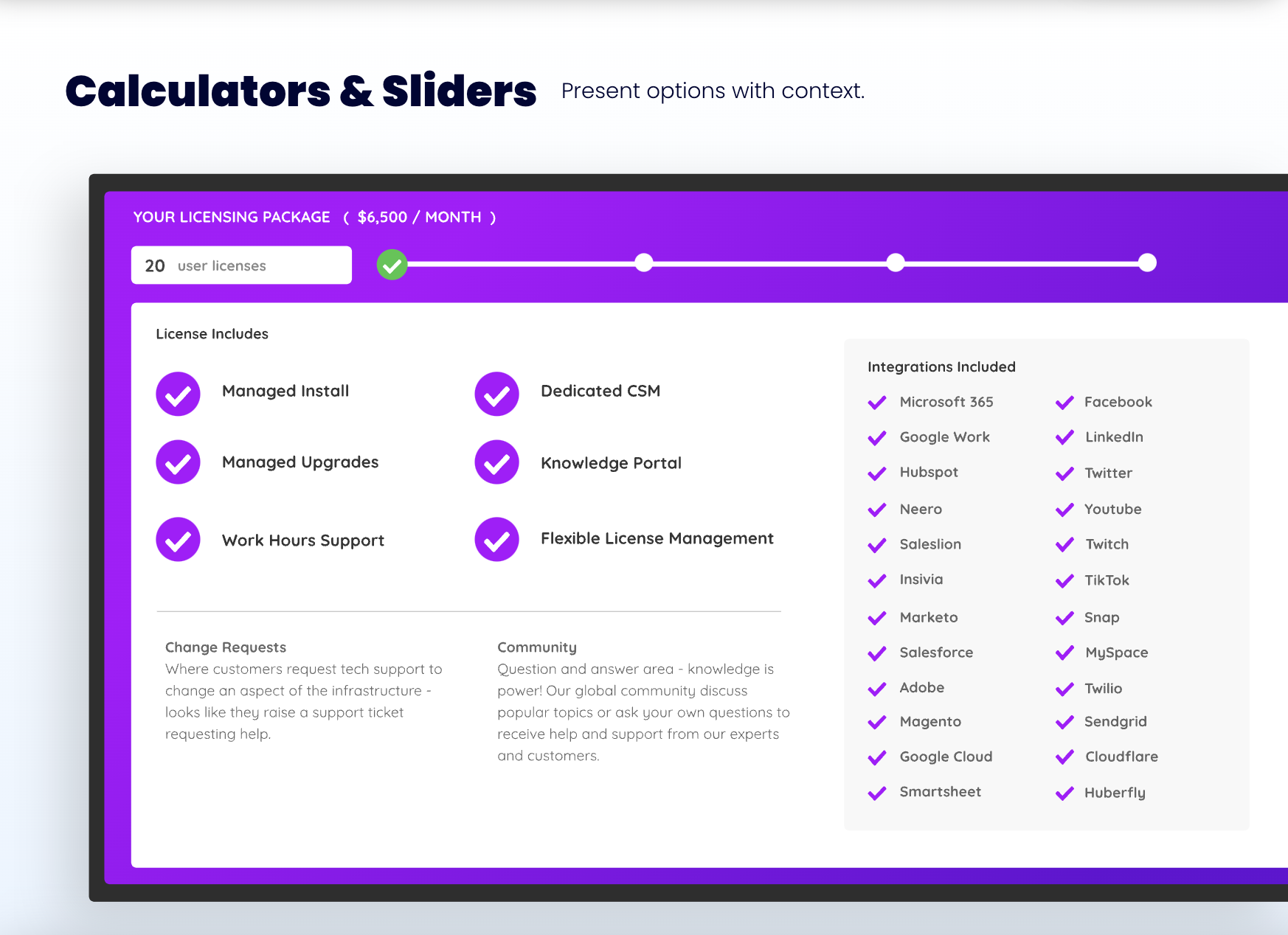
Pricing calculators are beneficial for both businesses and customers. For businesses, they can automate the quotation process and provide transparency in pricing. For customers, they offer an easy way to understand the cost before making a purchase decision.
This helps build trust, reduce the chance of working with unqualified leads, and ease the proposal process.
Priority Boards
A priority board is a common tool used in task management platforms. But, luckily for sales teams, their effectiveness extends to sales platforms as well.
A priority board (or a ranking board) is an interactive visual tool used to manage and organize items based on the customers’ priorities. These tools provide a clear overview of objectives and goals, allowing teams to prioritize and manage their workflow effectively.

Collaborative boards, such as priority boards, are ideal for discovery calls as they enable sales team members to evaluate the prospect’s priorities. By utilizing these interactive boards, the sales process can be streamlined and centered around the buyer’s requirements, leading to optimization.
These virtual selling tools encourage collaboration among team members by providing transparency and visibility into the work progress. They also help gain the trust of customers by giving them more ownership of the sales process by expressing their unique needs and wants.
Overall, priority boards help teams visualize their work, prioritize tasks, and maintain an organized workflow, leading to increased productivity, better collaboration, and improved customer engagement.
Solutions Boards
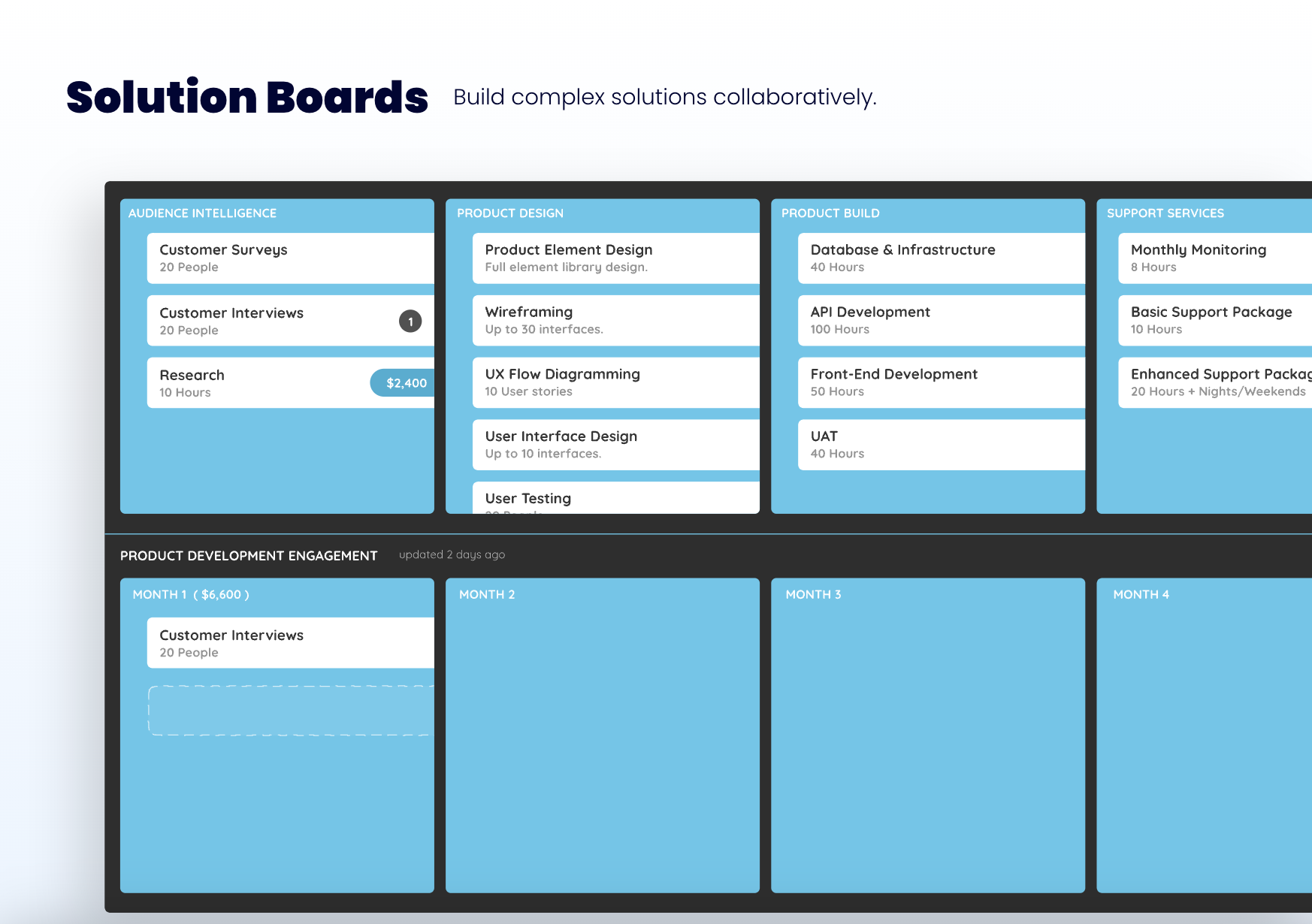
Similarly, pricing calculators and priority boards, solutions boards can be incredibly beneficial tools during sales processes.
Solution boards are visual tools that help teams synchronize and align on their objectives. They allow customers to customize their solutions based on individual needs and budget options. They also help provide sales teams design a general estimate of the schedule for implementing their company’s solution.
There are several reasons why solution boards are important:
- Transparency and Visibility: Solution boards provide a clear view of how the solution can be customized and implemented. This visibility also helps everyone understand what can happen in the project at any given time.
- Collaboration and Communication: By displaying all possible aspects of the solution you offer, you foster collaboration and communication with your customers. This allows you to discuss dependencies, and work together to solve problems.
- Efficiency: Solution boards help teams and customers prioritize work and quickly identify and address bottlenecks or issues in the workflow.
- Flexibility: Unlike traditional project management tools, solution boards accommodate changes easily. If priorities shift or new tasks come in, team members can adjust the board to reflect these changes.
- Continuous Improvement: Regularly updating and reviewing the solution board helps teams reflect on their process, learn from their experiences, and continuously improve their workflow.
In summary, solution boards are vital tools for enhancing collaboration between customers and companies, improving project and pricing transparency, and boosting overall productivity.
Gantt Charts
Gantt charts are beneficial remote selling tools for several reasons.
Firstly, they offer a clear and visual overview of the entire project timeline, allowing sales teams to see all tasks and their scheduled durations at a glance. This helps remote sales teams stay organized and track the progress of various sales activities and milestones.
Additionally, Gantt charts promote collaboration and coordination among remote sales teams. By helping remote B2B sales teams set and track important milestones within the project timeline these tools are incredibly beneficial for both sales reps and customers.
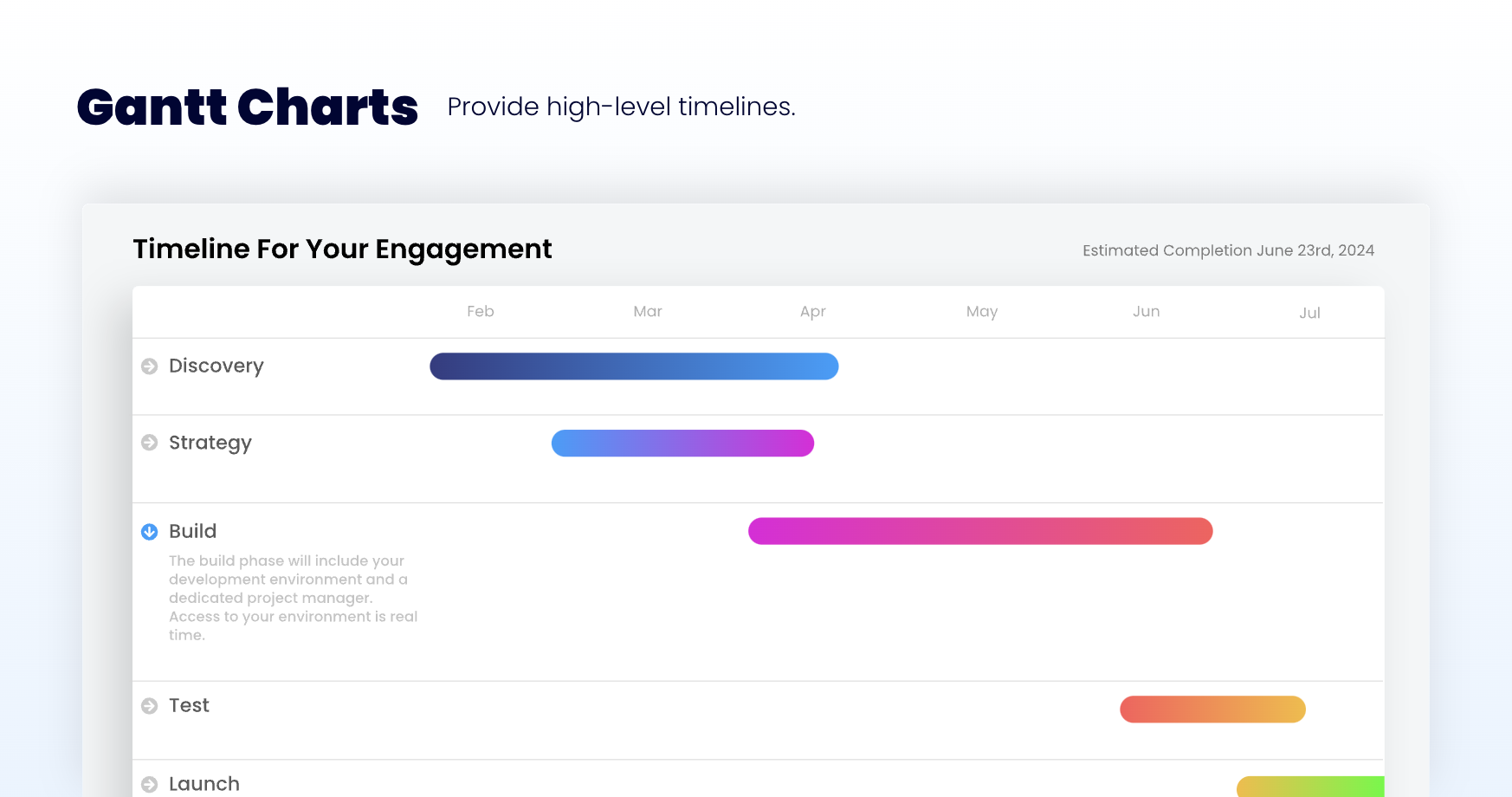
Also, by visualizing key checkpoints and deadlines, customers can gain a better awareness of how the solution will work with their current schedules and objectives.
Sales teams can share Gantt charts to provide a transparent and easily understandable representation of the sales process, including important milestones and deliverables. This fosters trust and enables effective communication with stakeholders, even in a remote setting.
Mutual Action Plans
In any given relationship, it is always beneficial for both individuals to be on the same page. Whether about finances or how to raise children, mutual collaboration in relationships is key.
So what does this look like in the world of sales? Mutual action plans.
What are mutual action plans?
A mutual action plan is a collaborative tool that outlines the steps both the seller and buyer will take to progress from initial engagement through to a completed sale.
In essence, it is a roadmap that guides both parties towards a mutually beneficial outcome, ensuring everyone is on the same page about what needs to happen, when, and by whom.
Key components of a mutual action plan often include:
- Goals: Both the seller’s and the buyer’s objectives for the project. These can be derived from the priority boards
- Actions: A detailed list of tasks each party must complete, including who is responsible for each task.
- Timeline: Estimated dates for when each action should be completed. These can be derived from solutions boards and Gantt charts.
- Outcomes: Expected results from each action, leading toward the overall goal.
- Review Points: Scheduled meetings or checkpoints to assess progress and make necessary adjustments.
The importance of a mutual action plan lies in its ability to align the expectations of both parties, provide transparency, keep the sales process on track, and ultimately increase the likelihood of closing a deal.
It also helps to build trust and fosters a sense of partnership between the seller and buyer.
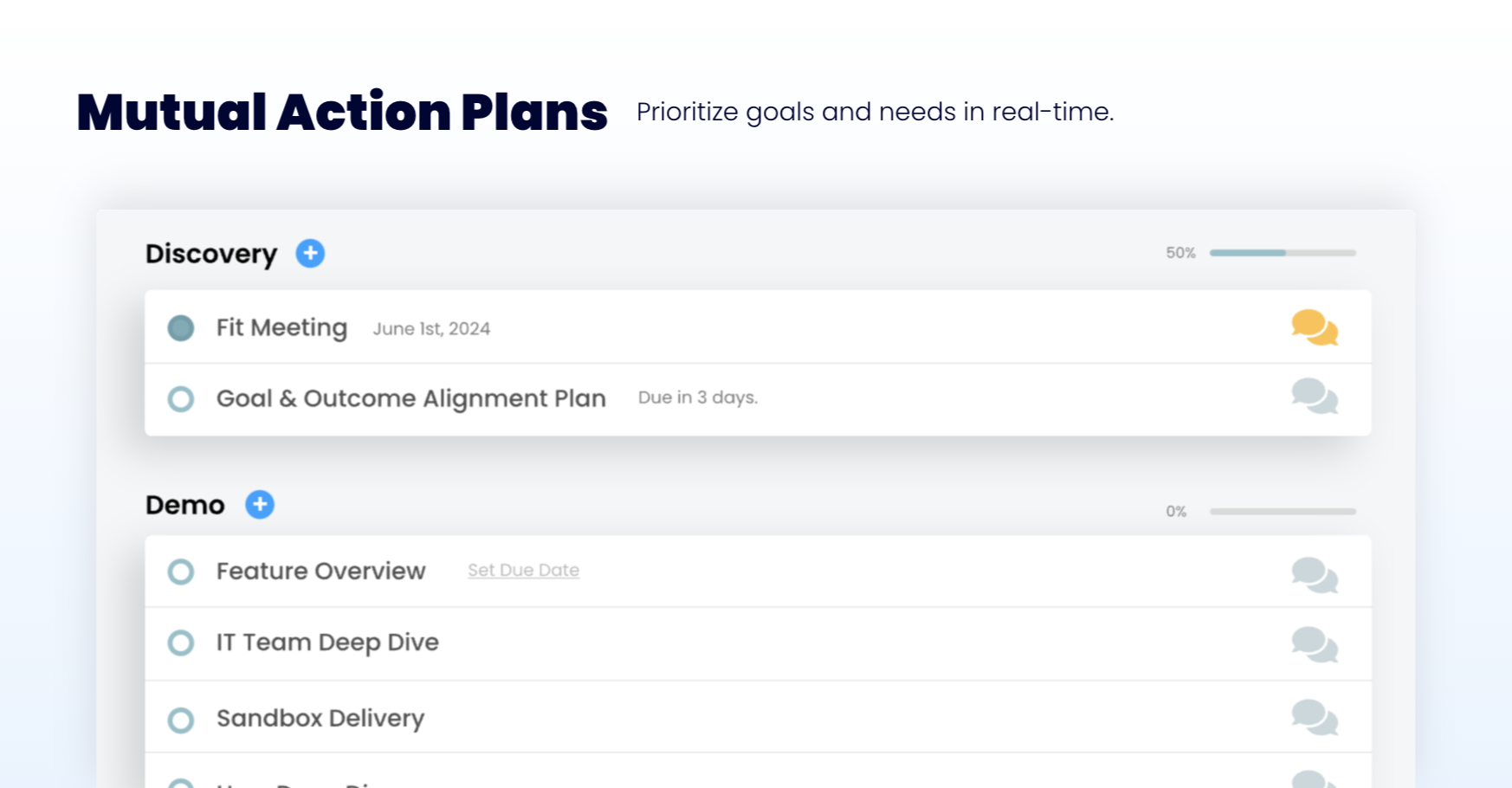
Remote Selling Techniques to Optimize Your Sales Process
While virtual sales tools like the 5 above can be extremely beneficial in maximizing your sales efforts and optimizing your sales process, remote selling techniques are also important to utilize.
Below are some of the top sales techniques for your sales team to use to improve your sales process.
Personalized and Targeted Communication
When engaging with prospects remotely, it’s essential to personalize your communication to create a more meaningful connection.
Use the information you have about the prospect from priority boards and similar tools, such as their industry, interests, pain points, and previous interactions, to tailor your message and approach.
This can be done through targeted email campaigns, personalized video messages, or customizing your sales presentations to address specific customer needs. By showing that you understand their unique challenges and can provide tailored solutions, you increase your chances of closing the deal.
Utilize Technology for Engaging Presentations
Remote selling relies heavily on technology, so it’s important to leverage it effectively to create engaging and interactive presentations. Use video conferencing tools that allow screen sharing, annotation, and collaborative features like solutions boards to make your presentations more dynamic.
Incorporate multimedia elements like videos, visuals, and interactive features to keep your prospects engaged and interested.
Interactive tools such as the ones listed above in digital sales software can also help create a more interactive and participatory experience.
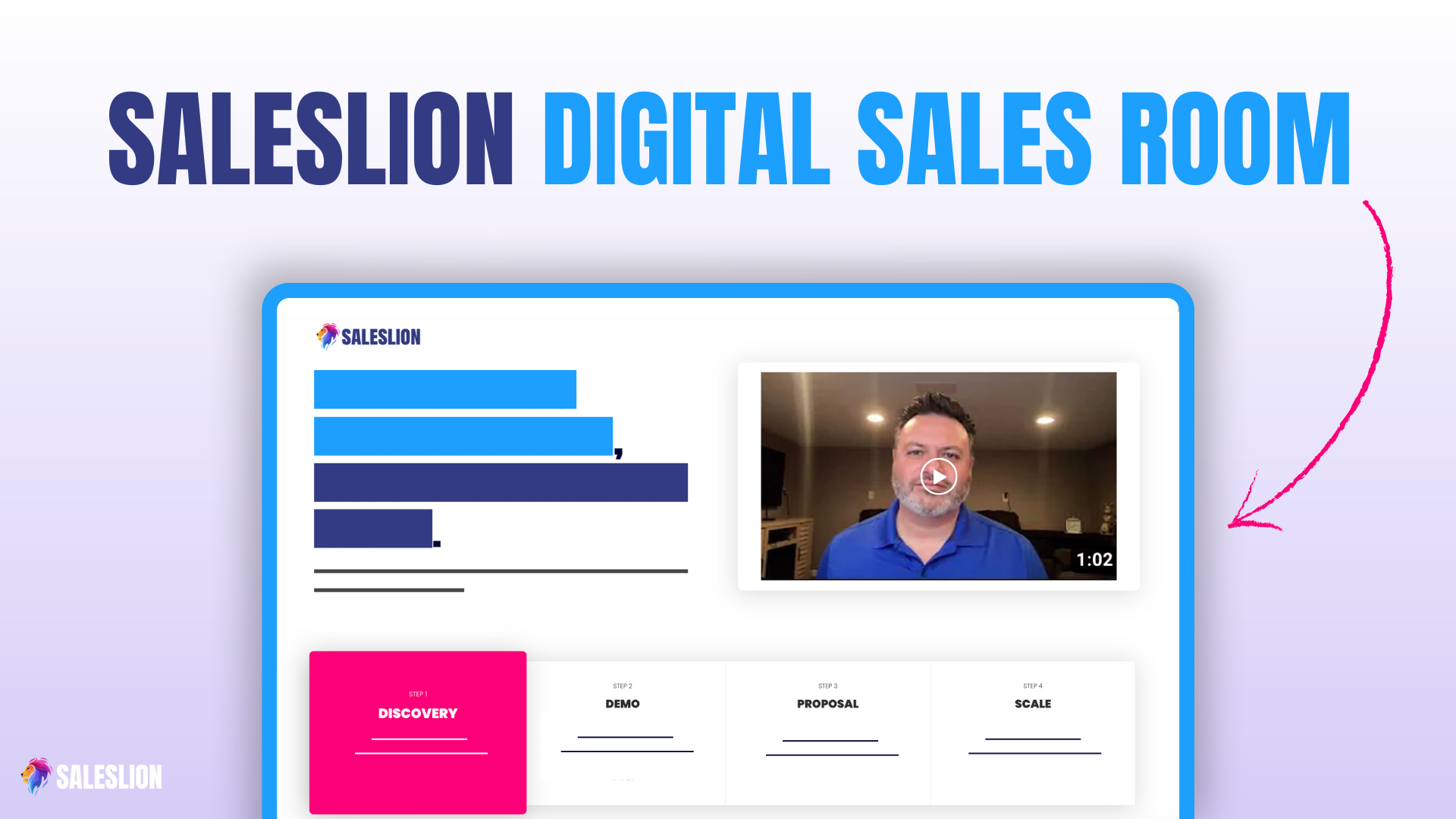
By leveraging technology, you can make your remote sales presentations more impactful and memorable.
Follow-Up and Nurture Leads
In remote selling, the sales cycle may be longer, and building trust and rapport can take more effort. It’s crucial to follow up with leads promptly and consistently to maintain engagement and keep your products or services top of mind. Use automated email workflows or CRM systems to send personalized follow-up emails, share relevant content, or schedule follow-up calls.
Consistent and timely follow-up demonstrates your commitment, responsiveness, and interest in addressing their needs. And nurturing leads through personalized communication and providing them with transparency in the form of accurate pricing calculators can help build trust and increase the likelihood of closing the sale.